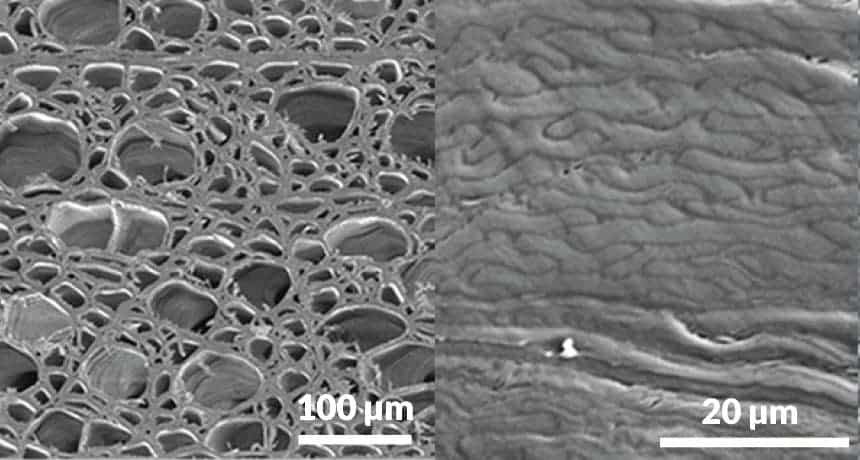American researchers are giving the term hardwood a whole new meaning. They have developed a relatively simple, boil-and-crush technique to make “superdense” wood — a strong but lightweight material which could be used to build everything from bridges to cars.

Image credits J. Song et al., Nature, 2018.
People have built and crafted with wood since times immemorial, and for good reason: it’s a plentiful, cheap, readily available building material (in most parts of the world), it’s got a good blend of strength and flexibility, and it’s relatively easy to work with. It also, to me at least, looks quite nice. Our relationship with wood as a building material, however, started to taper out with the industrial revolution, and today, it’s more of an occasional fling on the side than anything serious.
Old log, new tricks
Which is actually quite sad, as although wood lagged behind in the “strength” department, all its other qualities are still there. In a bid to put the spark back in this old flame, a team of US researchers has developed superdense wood — a highly-compacted wood that’s about as strong as steel, but much more lightweight.
The enviable physical properties of this material can be traced back to its production. It is constructed by boiling regular blocks of wood in a water-based solution of sodium hydroxide (lye) and sodium sulfite. These chemicals remove part of the lignin and hemicellulose in the wood (two organic compounds that give wood its structure and rigidity), making it more malleable.
This limbered-up lumber is then pressed at 5 megapascals (50 times the atmospheric pressure at sea-level) between two metal plates heated to 100° Celsius (212° F). The process squishes all the gaps between cells in the wood, shrinking the block to about 20% its initial thickness and increasing density three-fold.
With great squish comes great power, however: mechanical testing revealed that ultradense wood produced in this manner can withstand being stretched or pulled 11.5 times harder than the original without breaking. This would make it comparable to steel in strength, although it’s also more lightweight. The team also tested typical and superdense wood planks against stainless steel pellets fired from an airgun at 30 meters (98.5 feet) per second. The pellets went clean through the natural wood, but got lodged in the stack of densified wood of the same thickness, as you can see below:
Another advantage of the process, notes co-author Teng Li, a mechanical engineer at the University of Maryland in College Park, is that the chemicals used to scrub lignin and hemicellulose from the wood won’t pose any significant pollution concerns. In light of that fact, and of wood’s comparatively low environmental impact and sustainability, superdense wood could become an eco-friendly alternative to steel or other metallic alloys for construction works. Alternatively, it could be used in the manufacturing of more light-weight, more fuel-efficient vehicles, he adds.
As a final morsel for thought: wood is, ultimately, a form of carbon storage — plants, after all, scrub carbon from the atmosphere to grow. Viewed in this light, using superdense wood as a building material on a wide scale could help us hit two birds with one stone (if it’s harvested sustainably, of course). On one hand, it would help reduce carbon emissions from metal and non-metal mining and refining. On the other, it would capture some of the CO2 that’s already floating around. We can even make the window panes out of wood!
With the climate woes we’re facing, and those waiting for us in the future, we’ve got very few such stones to throw — and we need to get as many birds as we can.
The paper “Processing bulk natural wood into a high-performance structural material” has been published in the journal Nature.


